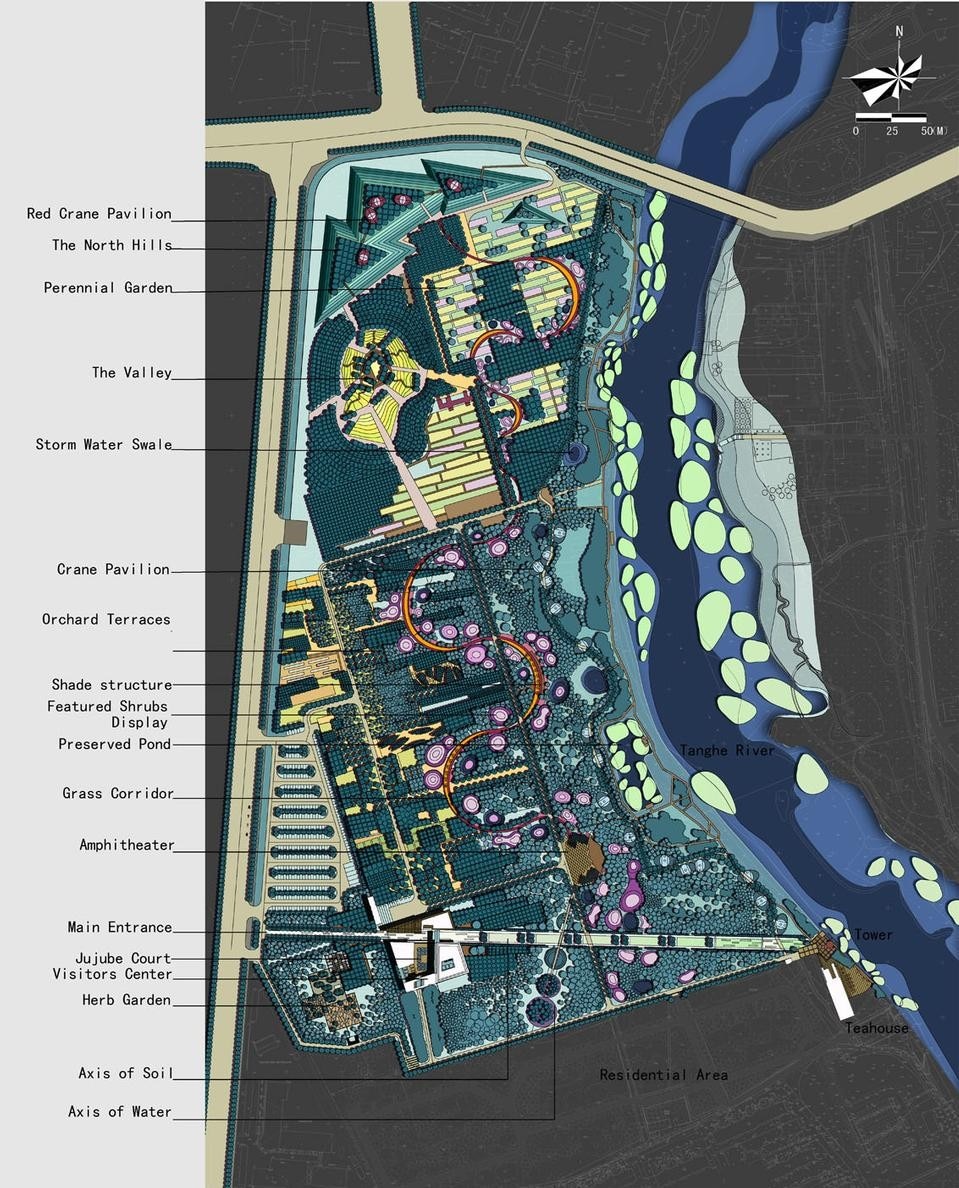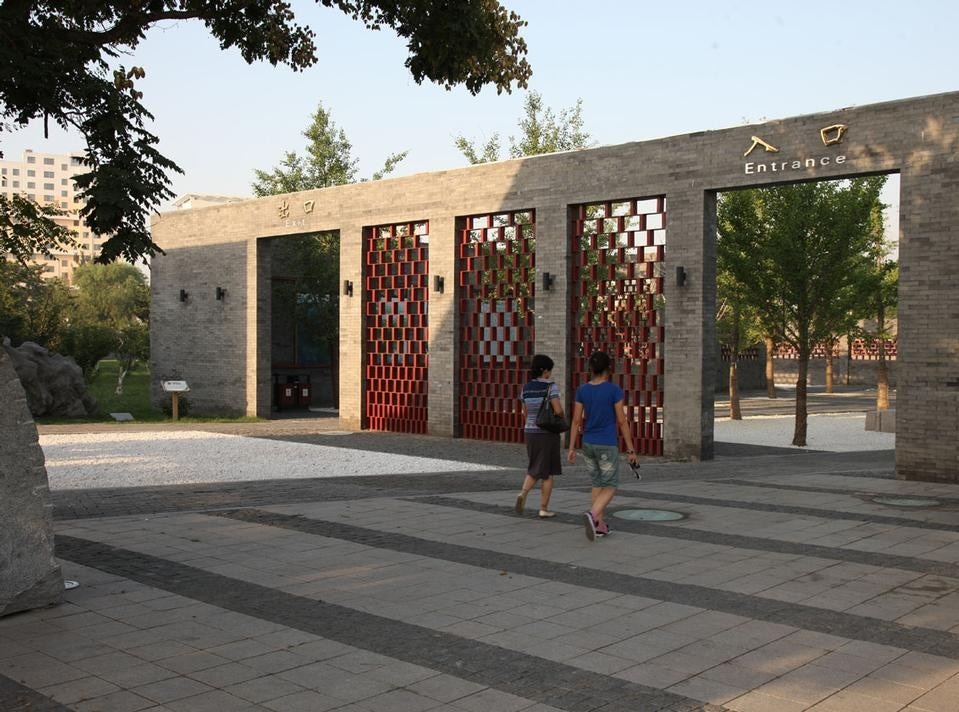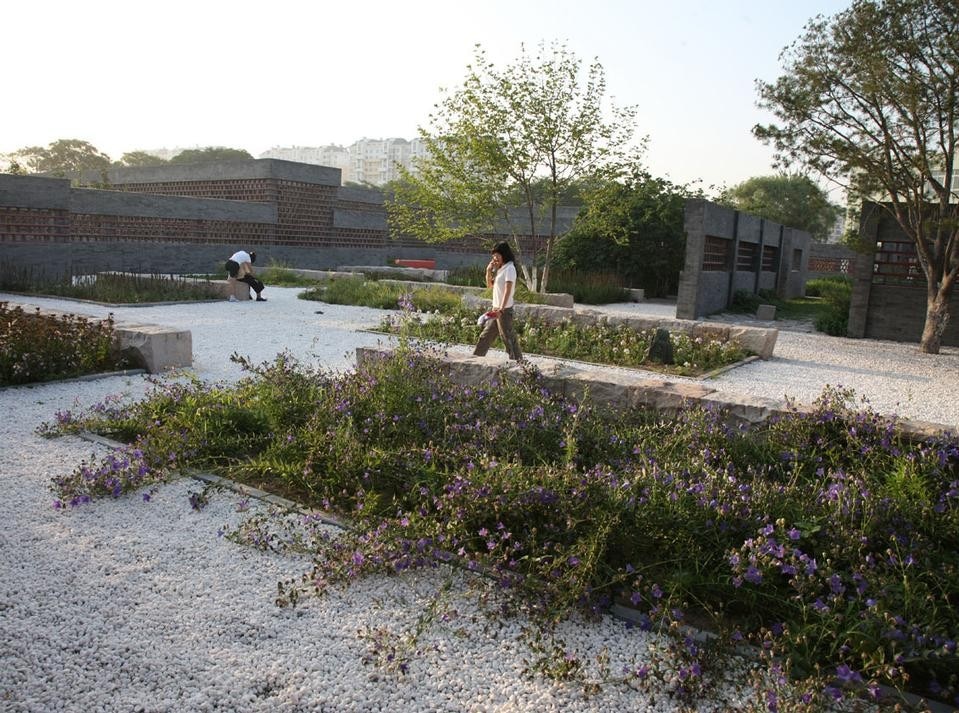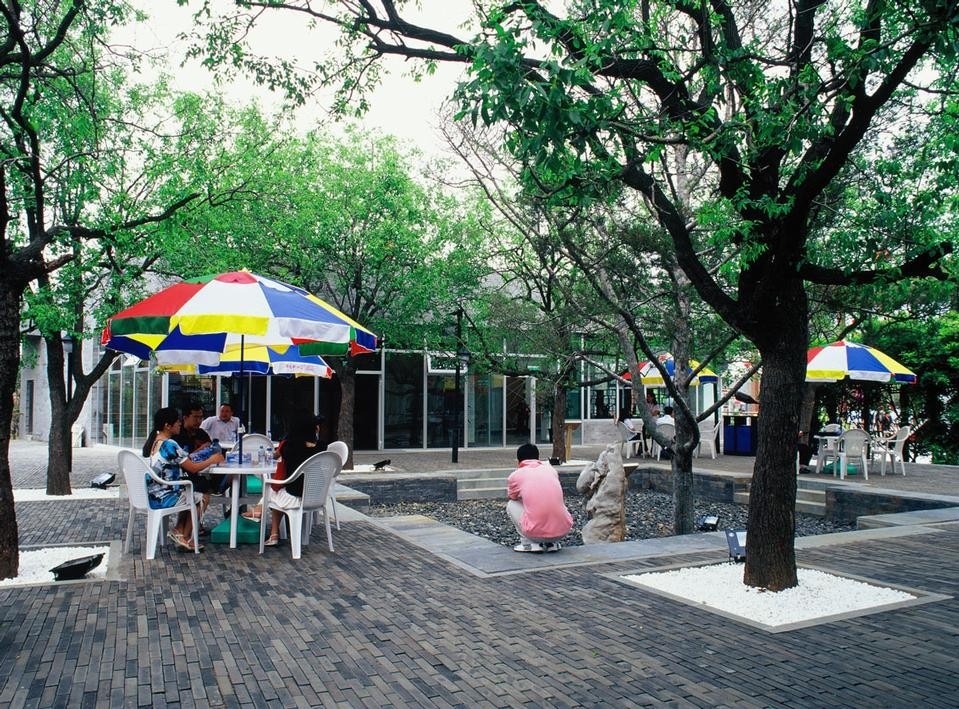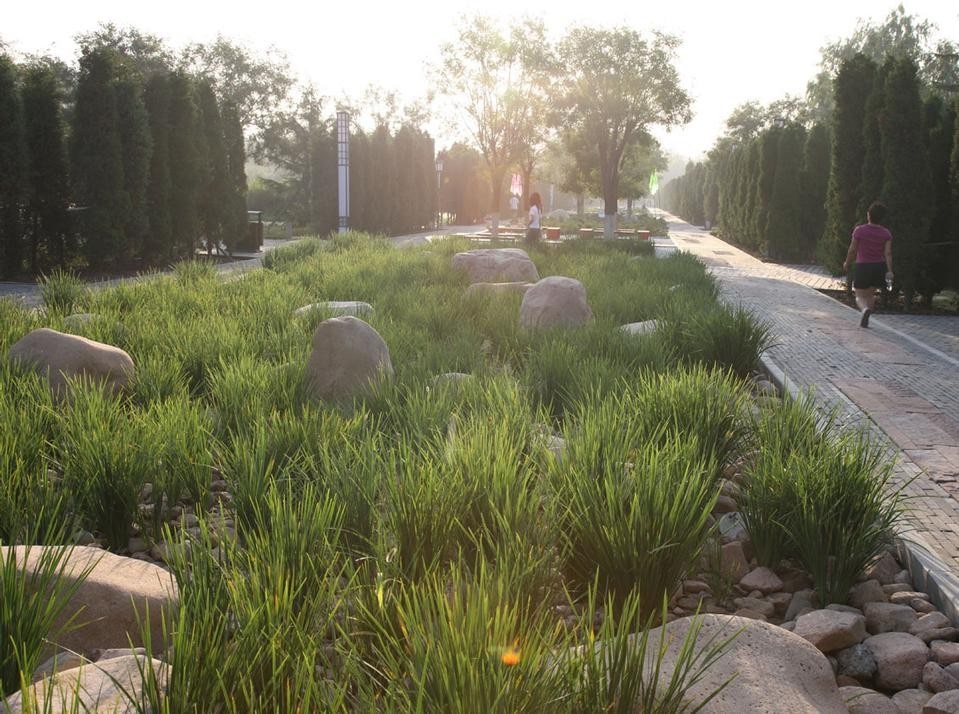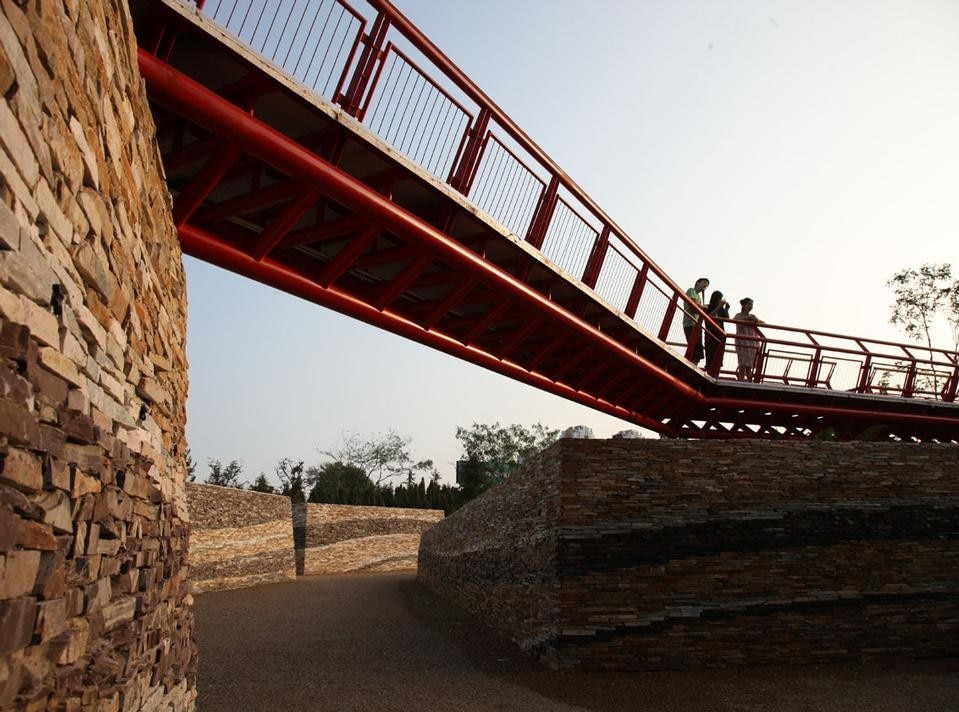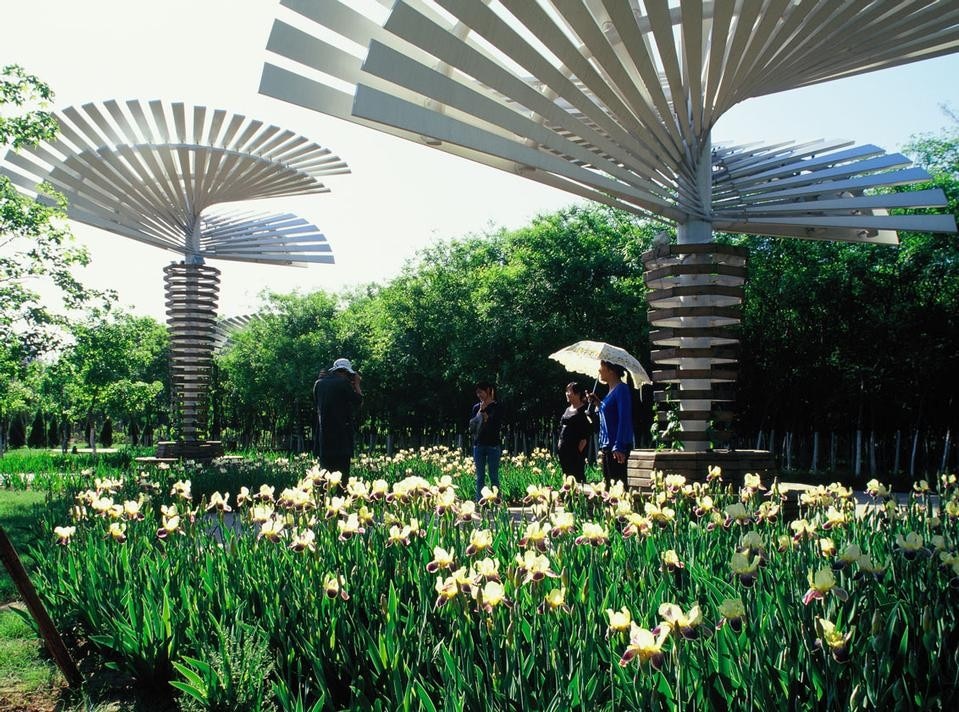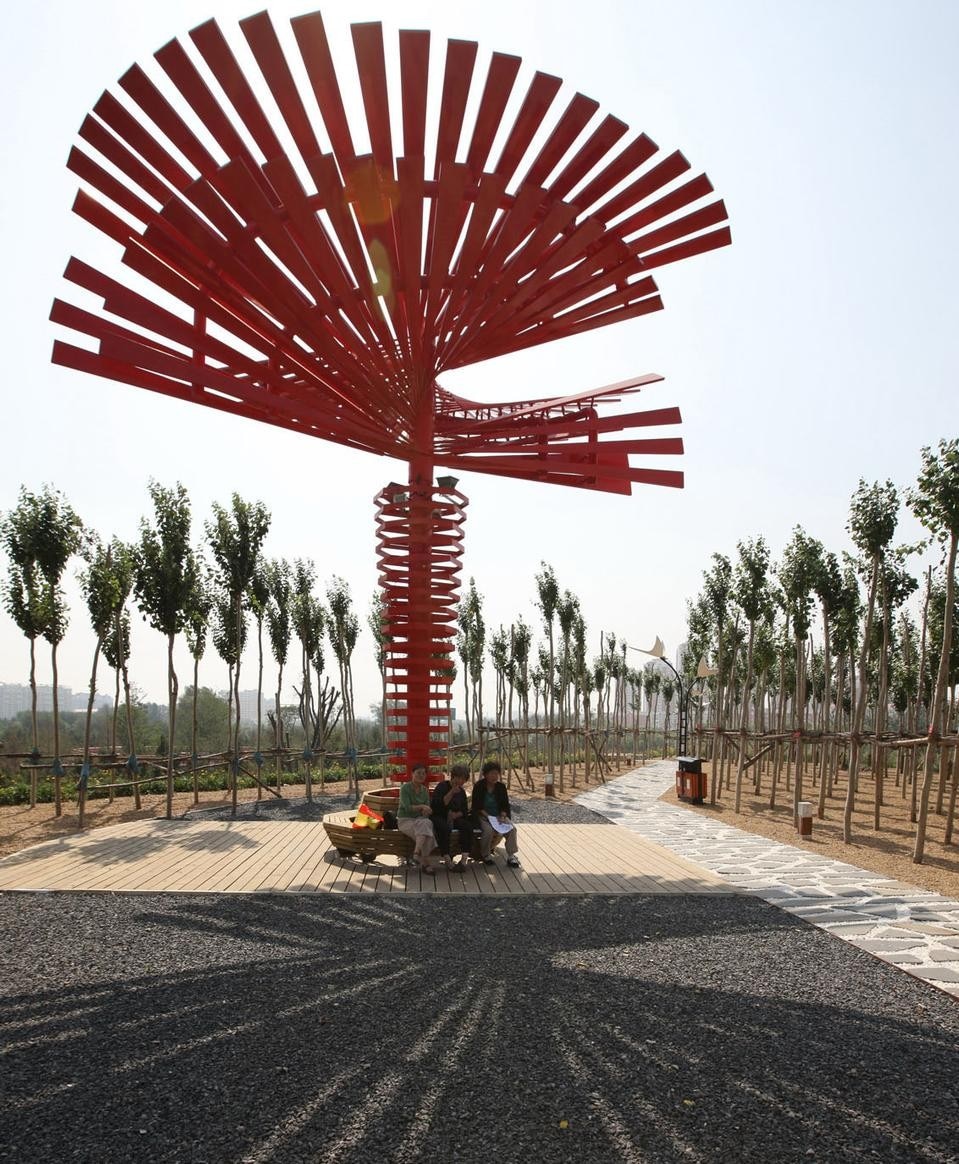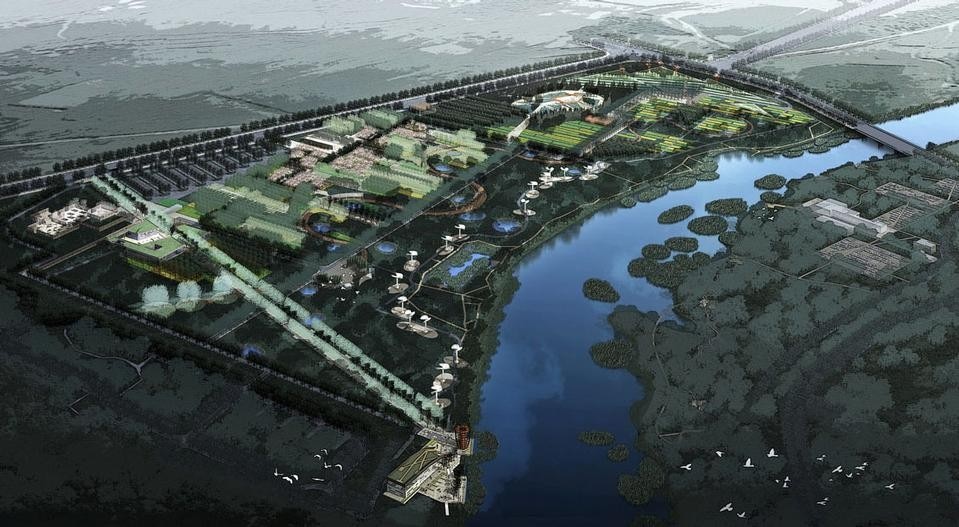The Crane Pavilions are inspired by the presence of a series of cranes alongside the nearby river and indicate from afar a place where visitors can relax in the shade. The use of colour, the articulation of the landscape into a series of theatrical sets, the design of elements that resemble an artistic installation are the founding elements of an approach that is never banal. It also succeeds in transforming an area of environmental decay, such as Qinhuangdao, into an educational experience for all.
Directed by Kongjian Yu, head and founder of the school of architecture and landscape of the university of Peking, Turenscape was a winner in 2009 at the World Architecture Festival in Barcelona with the rehabilitation of an abandoned marsh area in Tianjin. Laura Bossi
You quite often take part in projects to restore damaged or degraded landscapes. Does this reflect an increasing interest in environmental issues across China? How do you approach these projects?
Ecological recovery of the environment is certainly a big issue in contemporary China. Our country makes up 22% of the world's population but it possesses less than 10% of the earth's water, arable land and other natural resources – far below world average. The past three decades' careless urbanisation and industrialisation has left our national land overexploited and heavily polluted. 400 out of 660 cities suffer water shortages, 75% of the surface water is polluted, wetlands are disappearing, lakes and rivers are losing their ability to regulate floods and draught and soils are extensively contaminated. Underground water supplies have been dried out. Virtually any single piece of the land, either in the city or in the rural areas, has been damaged more or less, and need to be fixed in order to recover its ecological functions. This kind of restorative work needs to be done across all scales, from the national landscape to individual buildings and down to the backyard. All these issues are closely related to our profession of landscape and urban design and architecture.
I therefore define the practice of landscape and urbanism and architecture as an art of survival. It is about how can we safeguard and recover an ecological, healthy environment. Our living land systems need to sustain a demanding population that is eager to urbanise themselves and unsustainably consume resources and ecosystems services. It is an issue of ethics, about both the land and our profession.
How do I approach these projects? First, you get to read the site and respect the site itself, its relationship with the local landscape in terms of pattern and process. For example the storm water processes, biological processes and the cultural and historical processes, and you identify the problems. Second, you find a solution, which has to be based on scientific understanding, and is ecologically sound. And thirdly, the solution must be creative and artful, it is not a single minded engineering solution, but an integration of ecology, engineering and aesthetic. And more important, the solution must be authentic to the place and the users. For example, I prefer to use local materials and native wild plants but not the exotic ornamentals. It must be good for people, for the society, the environment, inexpensive and it must be beautiful. While authentic and good are usually easier to define, beauty is most difficult to define, therefore I will go for authentic and good first, and let beauty or art (such as my Red Ribbon project) follow afterward.
I prefer to call my approach as "ecological minimalism". That is, minimalism not in terms of form, but minimal ecological impact or minimal intervention to the natural processes and pattern to get maximum benefit (Such as the Red Ribbon in the natural setting).
You are the dean and the founder of the College of Architecture and Landscape of the University of Peking, but you are also a Visiting Professor at Harvard University. Can you synthesise the differences between American and Chinese approaches to landscape design?
China has a long tradition of garden design and garden art, but landscape architecture and gardening are dramatically different. Landscape architecture in China is basically a new profession, and still needs more practice to be clearly defined. I traced the origin of Chinese landscape architecture (not garden art) back to the survival art of land making, city building, irrigation and farming. I tend to believe that landscape architecture shall not find its origin in the gardening art of the elite class for pleasure making. The key phrase here is the "art of survival".
My course at Harvard Graduate School of Design is a great experience for me and also for my students. The studio course is jointly Landscape Architecture Department and Urban Planning and Design Department, with 50% of students from each. We try to go across the disciplines of cultures and professions and try to train a young generation of planners and designers to cope with globalisation, to work in other cultures and sensitive to them, and take the advantages of being able to work across the boards.
Since 2002, Turenscape has won eight prestigious ASLA awards. In 2010 you were awarded ASLA awards for the Shanghai Houtan Park, The Qinhuangdao Beach Restoration and the Tianjin Qiaoyuan Park. According to you, which is the strongest point of Turenscape design?
The strength of Turenscape's projects lies in their ecological sound and culturally sensitive approach and their integration between ecology and contemporary art. Since Olmsted time, the profession of landscape architecture seems to struggle between being art or being an ecological science. We actually take the middle road, the "eco-art". The key here is to make solution based on ecology but with innovative design. Being ecological without design or art will make the profession invisible and lose the identity of people; being artful without ecology is ethically not sound. Being culturally sensitive does not mean we are sticking ourselves to the 'tradition', what we are trying to do is to define a contemporary Chinese vernacular and a new aesthetic. We want to be authentic, to be good, and then beautiful.
